- Works at home and on the go
- 30-day free trial
- No hidden fees
- Great starter equipment
- Included fall detection
- 5 location technologies
- Discounts if you pay annually
- Home security integration
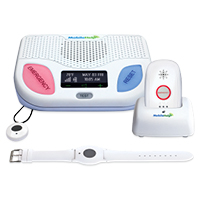 Mobile Help
Mobile Help
- Free activation on most plans
- Monitoring starting at $19.95/mo.
- Free activation on most plans
- Monitoring starting at $19.95/mo.
Some of our top systems have released statements regarding the coronavirus and the spread of COVID-19. See below. We've also added a new FAQ section about medical alert and COVID-19.
Bay Alarm Medical: Service will continue as usual during the pandemic. However, reductions in workforce may affect new customers. Walk-ins are no longer available and equipment orders may be subject to longer hold times and shipping delays. See the full statement from Bay Alarm Medical.
Medical Guardian: Monitoring and service will continue as usual from Medical Guardian.
Bottom line: Bay Alarm Medical offers affordable, comprehensive medical alert services
Bay Alarm Medical is our favorite medical alert system because it has something that can work for everyone. Whether your biggest concern in a device is price or mobility, Bay Alarm Medical has packages that address both. Its starting base price of $19.95 per month is one of the cheapest in the industry, and you can choose from medical alert devices that work at home, in your car, or walking through the park.
This company really only misses the mark when it comes to voice activation and its mobile app. Bay Alarm Medical doesn’t offer an emergency button you or a family member can activate with your voice in a medical emergency. And you have to pay an extra $5 per month if you want to use the caregiver app to keep tabs on your loved one.
Compare the best medical alert systems
| Lowest Monthly Price |
| Trial Period |
| In-Home Range |
| Backup Battery |
| Landline Option Available |
| Multiple Wearable Options |
| Learn More |
|
Bay Alarm Medical
|
GetSafe
|
Philips LifeLine
|
Medical Guardian
|
MobileHelp
|
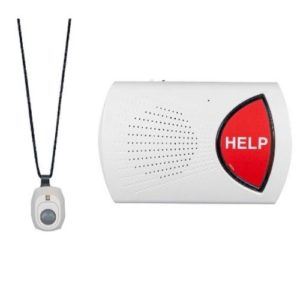 |
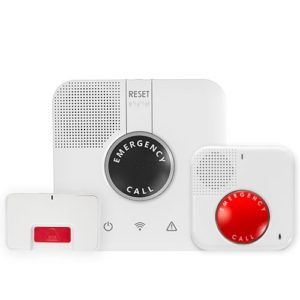 |
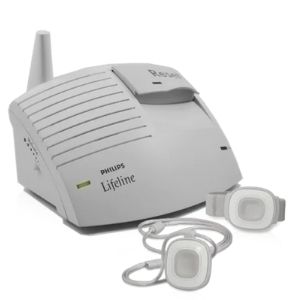 |
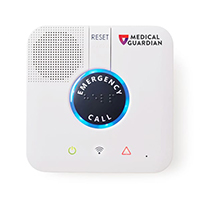 |
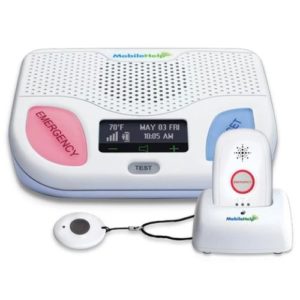 |
| $19.95 | $24.95 | $29.95 | $29.95 | $19.95 |
| 30 days | 30 days | 30 days | 30 days | 30 days |
| 1000 ft. | 1300 ft. | 400 ft. | 1300 ft. | 1400 ft. |
| 32 hours | 32 hours | Not Available | 32 hours | Not Available |
| Yes ✓ |
No X |
Yes ✓ |
Yes ✓ |
No X |
| Yes ✓ |
Yes ✓ |
Yes ✓ |
Yes ✓ |
Yes ✓ |
| Visit Bay Alarm Medical | Visit GetSafe | Visit Philips Lifeline | Visit Medical Guardian | Visit MobileHelp |
Data effective 08/03/2020. Offers and availability subject to change.
Our approach
To pick the best medical alert systems, we used a combination of hands-on experience, customer interviews, online research, and phone calls with medical alert companies. We also dug into industry standards and both expert and customer reviews. After examining 11 different medical alert systems and products, we identified the top five based on price, reliability, comfort, ease of use, extra features, and customer satisfaction. See our full rankings methodology to learn more.
Reviews: Best medical alert systems
#1. Bay Alarm Medical: Best overall
Bay Alarm Medical is ideal for people who like to customize products and services. Because most of its devices are add-ons, you can choose to go with a mobile-only plan, stick with at-home monitoring, or mix and match the best of both worlds to meet your needs. But all of the choices can get confusing—don’t be afraid to ask questions to make sure you end up with the medical alert plan that makes the most sense for you or your family member.
Bay Alarm Medical alert pricing
| Package | In-Home Medical Alert | In-Car Medical Alert | Mobile GPS Help Button | Full Coverage |
| Lowest Monthly Price | $19.95 | $29.95 | $24.95 | $39.95 |
| Equipment Price | Included | Included | Included | Included |
| Fall Detection | $10/mo. | $10/mo. | $10/mo. | $10/mo. |
| Included Equipment | Medical alert pendant Wall button |
Mobile app Car unit |
Mobile button Charger Lanyard |
Medical alert pendant Mobile button Wall button Car unit Mobile app Key lockbox |
Data effective 08/03/2020. Offers and availability subject to change.
Bay Alarm Medical features and flaws
We like the Bay Alarm Medical GPS Help Button because it’s an alert device you can take with you. But the company advises against giving the mobile help button double-duty as an at-home medical alert device because it works best when in motion. However, you can add an at-home unit for a bundled price starting around $39.95 per month.
You can choose between landline and cellular monitoring, which comes in handy when you have a family member (like I do) who feels more comfortable using a device that works with their home phone. It’s important to note that Bay Alarm Medical’s monitoring fees go up about $10 a month if you choose to go with cellular monitoring.
Personal insight
My grandma uses Bay Alarm Medical’s In-Home Medical Alert package with fall detection and we’ve been impressed with its performance. One night after taking off her hearing aids and turning out the lights, she accidentally knocked her pendant off the bedside table (sleeping with it on can be a strangulation risk).
Next thing she knew, she opened her eyes to two firemen who had made their way in to see if she was all right. The response center tried to reach either my grandmother (no hearing) or my mother after the fall alarm was sent, but no one answered. While my grandmother was shaken by the midnight surprise, we were all relieved to know how quick the response was.
Other things that help Bay Alarm Medical stand out include free coverage for a spouse, a 1,000-foot range (on the higher end compared to most systems that are closer to 600 feet), five-year pendant battery life, and extensive multilingual services (the company has operators that can serve customers in 170 languages).
On the downside, Bay Alarm Medical doesn’t have a voice-activated medical alert button, which is fairly common, and you have to pay an extra $5 per month to use the caregiver app. App access is so convenient and helpful, we really think it should be included.
Pros
- Landline or cellular monitoring
- Mobile and in-home packages
- Free spouse coverage
- 1,000-foot range
- 30-day risk-free trial
- Affordable pricing
- Fall detection that really works
Cons
- No voice control
- Extra fee required for mobile app
- Package offerings that can get confusing
How Bay Alarm is responding to COVID-19
See the full statement from Bay Alarm Medical.
#2. GetSafe: Best value
GetSafe designs its emergency response systems based on the size of your home—if you have more rooms, then you need more emergency buttons. What’s really cool is that your monthly monitoring fee stays the same no matter how many rooms or buttons you have to keep track of.
GetSafe medical alert pricing
| Package | Starter | Standard | Select |
| Lowest Monthly Price | $24.95 | $24.95 | $24.95 |
| Equipment Price | $77 | $149 | $229 |
| Fall Detection | $10/mo. | $10/mo. | $10/mo. |
| Included Equipment | Base station Combo button Standard wall button Voice-activated wall button |
Base unit Combo unit Standard wall button (3) Voice-activated wall button (2) |
Base station Combo button Lockbox Standard wall button (5) Voice-activated wall button (3) |
Data effective 08/03/2020. Offers and availability subject to change.
GetSafe features and flaws
The up-front equipment cost will be a little more out of your pocket, but your monthly fees will never increase. That’s why we made GetSafe our best pick for overall value. A lot of other medical alert systems roll the equipment cost into the monthly monitoring fees, which leads to monitoring costs as high as $60 a month. GetSafe charges you for your equipment from the outset, but you won’t have to pay more than $25 per month to monitor your medical alert equipment unless you add fall detection.
You’ll appreciate that every GetSafe package includes both traditional wall buttons and voice-activated buttons. That means if you fall and you’re not near a panic button, all you need to do is shout for help and assistance will be on the way. Plus, you get a waterproof, wearable help button that gives you a direct link to help if you want a more traditional emergency response experience.
We also like that GetSafe includes the caregiver mobile app at no additional charge. But there’s no multilingual support and the up-front equipment cost can be tough for some people to afford.
Pros
- Landline or cellular options
- Medical alert tech you don't have to wear
- Flat monthly monitoring fees
- 30-day risk-free trial
Cons
- High up-front cost
- No multilingual support
#3. Philips Lifeline: Best for fall detection
Philips Lifeline is the only medical alert service we’ve seen that includes fall detection in most of its plans. Most medical alert systems offer fall detection, but you have to pay up for it, and $10 extra per month is the standard in the industry.
Philips Lifeline medical alert pricing
| Package | Home Safe Standard | HomeSafe with AutoAlert | GoSafe 2 |
| Lowest Monthly Price* | $29.95 | $44.95 | $44.95** |
| Equipment Price | Included | Included | $99.95 |
| Activation Fee | $50 | $50 | N/A |
| Fall Detection | Not available | Included | Included |
| Included Equipment | Base station Pendant or wristband |
Base station AutoAlert pendant |
AutoAlert pendant Charger |
Data effective 08/03/2020. Offers and availability subject to change.
*Lowest monthly price based on landline monitoring. Cellular monitoring ranges between $41.95–$64.95/mo.
**GoSafe2 is available only with cellular monitoring.
Philips Lifeline features and flaws
You can find a Philips Lifeline medical alert package that will work in your home or when you’re on the go. Best of all, you can get fall protection in both scenarios—without adding extra fees to your monthly bill. That opens up a whole world for folks who like to get out and about, and the advanced tracking technology in the Philips GoSafe 2 plan has you covered both at home and when you’re away—without the need for extra equipment. That means help will be on the way no matter where you are when you need it.
But good things often come at a price, and Philips’s advanced tech will cost you more than most other emergency response systems—even when you tack on that extra $10 that most companies charge for fall protection.
Pros
- Automatic fall detection included in most packages
- Advanced GPS tracking
- In-home and mobile coverage
- Landline and cellular monitoring
Cons
- Higher costs
- No wristband option
#4. Medical Guardian: Best for customization
If you want a customized medical alert system that meets your specific needs—or those of your loved one—then Medical Guardian probably has a plan that will work for you. Plus, Medical Guardian has the longest range of any system we’ve seen. You’re covered as long as you’re within 1,300 feet of your base unit.
Medical Guardian medical alert pricing
| Package | Classic Guardian | Home Guardian | Active Guardian | Freedom Guardian | Mobile Guardian | Family Guardian |
| Monthly Price | $29.95 | $34.95 | $44.95 | $44.95 | $49.95 | $79.95 |
| Equipment Price | Included | Included | $99 | Included | Included | Included |
| Fall Detection | $10/mo. | $10/mo. | $10/mo. | N/A | $10/mo. | $10/mo. |
| Included Equipment | Base station Neck pendant or wristband |
Base station Neck pendant or wristband |
All-in-one wearable device | Medical alert watch | Charger Mobile medical alert device Neck pendant or wristband |
Base station Entry sensor Motion sensor (2) Neck pendant or wristband |
Data effective 08/03/2020. Offers and availability subject to change.
Medical Guardian features and flaws
Medical Guardian includes the cost of equipment in your monthly monitoring fee, except for the Freedom Guardian plan. That plan includes a medical alert smartwatch that lets you take your protection everywhere you go. You’ll pay $99 for the smartwatch, but that’s around $250 cheaper than MobileHelp’s Samsung smartwatch.
One unique thing about Medical Guardian is its integration with home security components. The Family Guardian package includes your typical medical alert equipment along with security elements like a motion detector and door sensors. This combination is particularly useful if you have a loved one who wanders, because you’ll get an alert if they open the front door to leave.
Once again you have medical alert plans that charge more for fall monitoring, and this is the only company on our top five list that doesn’t offer some kind of trial period or money-back guarantee.
Pros
- Options for travel, in-home, and active lifestyles
- Discounts if you pay annually
- Smartwatch available
- Home security integration
Cons
- No trial period
How Medical Guardian is Responding to COVID-19
See the full statement from Medical Guardian.
#5. MobileHelp: Best for active lifestyles
MobileHelp was one of the first medical alert systems to offer in-home, on-the-go, and hybrid options. Because few of us stay put at home all the time, we think the variety of options is important for anyone who needs the extra support of a medical alert system.
MobileHelp medical alert pricing
| Package | MobileHelp Classic | MobileHelp Wired Home | MobileHelp Solo | MobileHelp Duo | Mobile Duo |
| Monthly Price | $19.95 | $24.95 | $37.95 | $41.95 | $44.95 |
| Equipment Price | Included | Included | Included | Included | Included |
| Activation Fee | $49.95* | N/A | N/A | N/A | N/A |
| Fall Detection | $10/mo. | $10/mo. | $10/mo. | $10/mo. | $10/mo. |
| Included Equipment | Base station Help button Lockbox |
Base station Help button |
Charger Lockbox Mobile help button |
Base station Cahrger Mobile help button |
Charger Lockbox Mobile help button (2) |
Data effective 08/03/2020. Offers and availability subject to change.
*Activation fee waived with annual subscription, $359.40
MobileHelp features and flaws
Whether you want traditional medical alert monitoring (like a panic button you wear around your neck) or you’re looking for something a little cooler, MobileHelp has something for you to consider. This was the first company to develop a smartwatch that works as a medical alert system, fitness tracker, and GPS locator.
Although we found MobileHelp’s Samsung smartwatch expensive and a little bit clunky during testing, we were impressed with the company’s commitment to bring medical alert systems into the 21st century. There may be some more work to be done (the watch doesn’t let you download apps or get messages), but we think this is a huge step in the right direction for any active person who wants the reassurance provided by medical alert technology.
Personal insight
My father-in-law had a string of falls, and after one that left him down for three days before he was able to call for help, we convinced him to try the MobileHelp medical alert system. Even though we lived two states away, we got calls immediately whenever the alarm was triggered. Fortunately most calls were false alarms, but it made us feel better knowing that he would get the help he needed quickly, even with us across the country.
While MobileHelp gets the idea right, the execution isn’t without its wrinkles. The two-piece mobile system is bulky, the smartwatch has limited functionality, and the distinctions between packages are hard to decipher at times.
For straightforward medical alert service that’s budget-friendly, we recommend the MobileHelp Classic package that includes an at-home base station, help button pendant, and house key lock box to make it easy for help to get to you when you need it. You can also add fall detection to the Classic package and still come out around $30 per month, which is a good deal.
Pros
- Samsung medical alert smartwatch
- Multiple on-the-go options
- Free activation on most plans
- Monitoring starting at $19.95/mo.
Cons
- Limited smartwatch function
More medical alert systems that are worth a look
LifeFone
LifeFone offers both in-home and mobile medical alert options that are pretty standard. Its packages range from around $25 per month up to $40, and the equipment is simple and straightforward.
The best thing about LifeFone is it charges only $5 a month to add fall protection compared to the usual $10. We also like that LifeFone uses both AT&T and Verizon cellular networks with its on-the-go GPS necklace. But the company offers support only in English, and the range is limited to 600 feet from the base unit for its fall detection devices. (However, the pendant necklace and watch have a 1,300-foot range).
LifeAlert
If you’ve fallen and you can’t get up, this is the brand that comes to mind. It may have started out as the best marketer in the industry, but getting specific information about LifeAlert’s offerings was hard.
The website doesn’t provide any details, and it was difficult to get a straight answer about pricing and equipment over the phone. The prices we did get were high compared to other companies. LifeAlert’s devices are easy to use and have long battery life, but we think you can get equal quality with better service and more affordable pricing.
New product alert!
If you have an in-home medical alert system but want some kind of protection when you’re out and about, the Noonlight app is a great option. And it won’t cost you as much as a full upgrade to your current system.
Noonlight App Basics:
- Free app puts a panic safety button on your cell phone
- 24/7 monitoring to call for help
- Works with other smart devices like Google Home and Amazon Echo
- Upgrade for extra features and protection ($5 or $10/mo.)
How to pick a medical alert system
There isn’t a one-size-fits-all solution when it comes to medical alert systems. We all have different needs and risk factors that need to be considered. To help you find your ideal emergency response match, we’ve outlined the different factors you should examine before making a decision.
Specialty settings
Some medical alert systems are designed with specific needs in mind. There are voice-activated alarms for people with dexterity challenges and other medical alerts that use motion detectors to automatically request assistance in the event of a fall.
Two-way communication
Not all medical alert devices offer two-way talk. If the added comfort of speaking with an operator is important to you, choose a medical alert system that has this feature. Two-way communication can be available through the base unit or a help button.
Battery backup
You don’t want to worry about a dead battery when you need help. Make sure the medical alarm system you rely on has battery backup so that it can work even during a power outage.
Range and GPS
Some medical alert buttons will work only in your home, providing coverage for a 600-foot radius on average. If you want to be covered for shopping trips—or even when you’re out in your yard—look for a system with broader range. An alert system that uses GPS can increase mobility and make it easier for emergency services to pinpoint your location when it counts.
Key lockbox
You don’t want emergency responders to show up at your house with no way to get inside. Many medical alert systems offer lockboxes where you can keep a spare key to help emergency personnel get to you as quickly as possible.
Monitoring services
There can be a difference between companies that operate their own monitoring center and those that outsource support to a generalized call center. Companies with their own monitoring centers have faster access to customer records and emergency responders who are specially trained to address the needs of medical alert system clients.
Wearable options
Medical alert buttons are typically worn in a wristband or as a pendant around the neck. Which style you choose can be more than a matter of personal preference. Consider the strangulation risk of a neck pendant—although it’s a small risk, it can still be worrisome if you use a walker, wheelchair, or bed guardrails.
Cost
Many emergency response systems come with monthly service or usage fees in addition to the initial cost of the device. Be sure you understand the monthly cost before committing to a medical alert system—and ask if the company offers any specials or discounts on equipment when you sign up for monthly monitoring. You may also be able to save by paying for your service a year in advance instead of month to month.
Medical alarm system FAQ
Medical Alerts & COVID-19 FAQ
The best way to protect yourself is to stay home, away from large crowds and public places. Your medical alert device contacts the monitoring center and trained professionals to get you help in case of a fall or emergency. If you start to feel symptoms, you can use the bracelet to call for an ambulance. But we recommend calling a friend, neighbor, or loved one to take you to a medical facility first.
Will my medical alert device still work during the pandemic?
Bay Alarm Medical and Medical Guardian have both released statements saying monitoring centers for both companies will remain functional. Service may vary from company to company, but as long as monitoring centers are up, your device will continue to work normally.
Where can I find updates about COVID-19 and the coronavirus?
Trusted sources like the Centers for Disease Control (CDC) and the World Health Organization (WHO) update their websites with tips and news almost daily. Stick to reliable sources like these for the best information.
How do medical alert systems work?
A medical alert system keeps you connected to help 24/7. If you experience a medical emergency like a fall or heart attack, a medical alert system makes it easy for you to get the help you need. Most medical alarm systems activate at the touch of a button, but others can detect a fall and automatically send out a distress signal.
Once your alert system is activated, you are connected to an operator at a monitoring center who assesses the situation and sends the help you need. Many medical alert systems also contact designated family or friends so you won’t be alone.
Are medical alert systems covered by insurance?
In most cases, medical alert systems are not covered by health insurance or Medicare. But you may be able to get some or all of the cost of a medical alert covered by long-term care insurance.
Because long-term care insurance is devoted exclusively to helping people remain in their homes, an alert system may qualify as an in-home care service. As with all medical coverage, it’s best to consult your insurance provider for a definitive answer about whether or not your medical alarm system could be covered.
When should I consider getting a medical alert system?
Every 11 seconds, an adult age 65 or older goes to the emergency room because of a fall. Falls are the number one cause of fatal and nonfatal injury among older Americans, racking up $50 billion in fall-related medical costs in 2015.¹
Falls are one of the most common reasons people consider getting a medical alert system—but they’re not the only reason. Other considerations include getting older, living alone, or living with certain medical conditions such as diabetes. Unfortunately, there’s no perfect answer about when to add a medical alert system to your personal safety plan, but there are a few guidelines that may help.
- First of all, listen to your gut. If you feel the need for an extra lifeline to help, don’t ignore it. Your peace of mind is important, and it shouldn’t be overlooked.
- Other factors that may signal it’s time to look at a medical alert system include changes in mobility, balance, memory, or eyesight.
But your decision doesn’t have to be related to changing health. Medical alarms also make sense for anyone who regularly hikes alone, and they can help keep track of children and others who are prone to wandering.
Sources:
1. The National Council on Aging, “Falls Prevention Facts” Accessed June 30, 2020.
The post The Best Medical Alert Systems of 2020 appeared first on SafeWise.
from Blog – SafeWise https://ift.tt/30znL69
via IFTTT
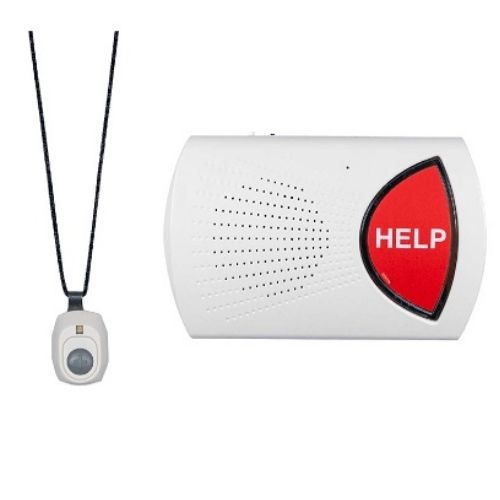
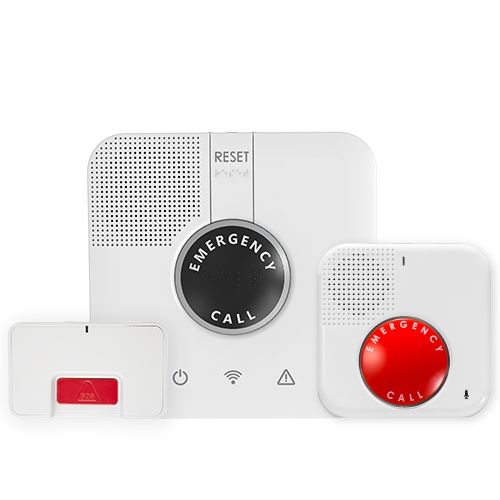

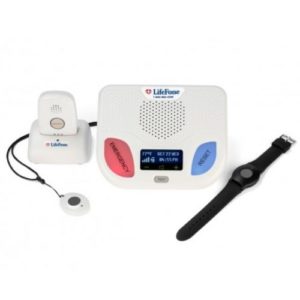
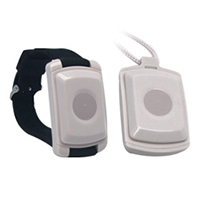
No comments:
Post a Comment